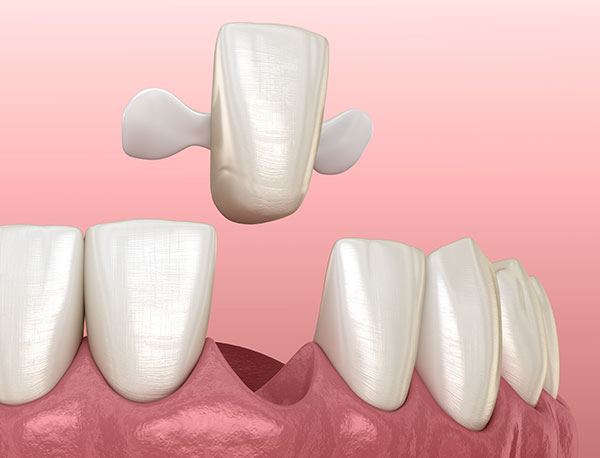Maryland Dental Bridges
A Conservative Solution for Missing Teeth
Maryland dental bridges offer a conservative and durable solution for individuals looking to replace missing teeth. With their ability to preserve natural tooth structure and provide stability, Maryland dental bridges may be recommended for specific cases.
Explore our Luck dentist’s guide to these types of dental bridges below.
What Are Maryland Dental Bridges?
Maryland dental bridges, also known as resin-bonded bridges, are a type of dental prosthesis used to replace one or more missing teeth. Unlike traditional bridges that rely on dental crowns to support the replacement teeth, Maryland bridges use a metal or porcelain framework bonded to the back of adjacent teeth. This framework provides support and stability to the artificial teeth, eliminating the need for dental crowns.
Do Dentists Still Use Them?
While they’re not as popular as traditional dental bridges, some dentists may use them to replace front teeth.
Benefits of Maryland Dental Bridges
There are many benefits associated with Maryland dental bridges, including:
- Conservative Approach: Maryland dental bridges are a conservative option for tooth replacement. They require minimal alteration to adjacent healthy teeth compared to traditional bridges, which often require significant enamel removal.
- Preserves Natural Teeth: This type of bridge relies on bonding to neighboring teeth without the need for crowns. As a result, the natural structure of the adjacent teeth is preserved, reducing the risk of long-term damage.
- Quick and Non-Invasive: The process of getting a Maryland dental bridge is generally quicker and less invasive compared to other restorative options. It involves minimal tooth preparation, making it a faster procedure with a shorter recovery time.
- Aesthetic Improvement: Maryland bridges provide an aesthetically pleasing solution for filling in gaps left by missing teeth. The pontic (replacement tooth) is customized to match your natural teeth, enhancing the appearance of your smile.
- Functional Restoration: These bridges restore your ability to chew and speak properly. By replacing missing teeth, Maryland bridges help maintain normal oral functions, which can be compromised when teeth are lost.
Maryland Bridges Compared to Traditional Bridges
There are some key differences between Maryland dental bridges and traditional dental bridges, including:
- A Conservative Approach: Maryland bridges offer a more conservative treatment option compared to traditional bridges. Since they don’t require extensive preparation of adjacent teeth for crowns, more of the natural tooth structure is preserved.
- Strength and Stability: Traditional bridges, with their crowns, provide excellent strength and stability. However, Maryland bridges can be a suitable choice for replacing front teeth or areas with less biting force, as they offer sufficient strength and stability for such situations.
- Cost: Maryland bridges are often more cost-effective than traditional bridges because they require less dental work and materials. However, the cost may vary depending on factors such as the number of missing teeth, materials used, and the complexity of the case.
- Aesthetics: Both Maryland and traditional bridges can be customized to match the natural color and shape of your teeth, providing a natural-looking smile. However, traditional bridges may offer slightly better aesthetics due to the use of dental crowns.
Maryland Dental Bridge Process
Initial Consultation
The process begins with an initial consultation with your dentist. During this appointment, your oral health will be evaluated, and the dentist will determine whether you’re a suitable candidate for a dental bridge. They’ll also discuss your treatment options, including the type of bridge (traditional, cantilever, Maryland, or implant-supported) that would be best for your case.
Preparation
If a Maryland dental bridge is chosen, this type involves minimal alteration of the adjacent teeth. These adjacent teeth will have a small amount of enamel removed to make space for the bridge to be bonded in place. Impressions of your teeth are taken to create a custom bridge that fits your mouth perfectly. These impressions are sent to a dental laboratory where the bridge will be fabricated.
Temporary Bridge
While your permanent bridge is being created, a temporary bridge might be placed to protect your exposed teeth and gums.
Bridge Fitting
Once the custom bridge is ready, you’ll return to the dentist’s office. The temporary bridge is removed, and the new bridge is checked for fit, comfort, and appearance. The dentist may make some adjustments to ensure a proper fit.
Bonding
Once satisfied with the fit, the dental bridge is bonded to the adjacent teeth using dental cement. For Maryland bridges, this usually involves bonding a metal or ceramic framework to the back of the adjacent teeth. This framework supports the pontic (replacement tooth) and holds the bridge securely in place.
Final Adjustments
After the bridge is bonded, your dentist will check your bite and make any necessary adjustments to ensure proper alignment. Your bite must be balanced to avoid undue stress on the bridge and your natural teeth.
Do You Need a Maryland Dental Bridge?
Your dentist may recommend a Maryland bridge for patients for various reasons, including:
- Missing teeth: A Maryland dental bridge is used to replace missing teeth, particularly when adjacent teeth are healthy and strong.
- Aesthetic concerns: Bridges improve the appearance of your smile by filling in gaps left by missing teeth.
- Speech improvement: Missing teeth can affect speech, and a bridge can help improve clarity in speech patterns.
- Chewing functionality: Bridges restore the ability to properly chew and bite, which can be compromised by missing teeth.
Frequently Asked Questions
Are Maryland dental bridges permanent?
While Maryland dental bridges are considered permanent in the sense that they are not removable by the patient, they may not last a lifetime. The longevity of a bridge depends on factors like oral hygiene, diet, and general oral health. With proper care and regular dental check-ups, a Maryland bridge can last for many years.
Is getting a Maryland bridge painful?
The process of getting a Maryland dental bridge is typically not painful. Local anesthesia is used during the preparation phase to ensure you are comfortable and don’t feel any pain or discomfort. After the procedure, there might be some mild sensitivity or discomfort as your mouth adjusts to the new bridge, but this usually subsides within a few days.
Can anyone get a Maryland dental bridge?
Maryland dental bridges are a suitable option for some cases, but not all. They work best when adjacent teeth are strong and healthy, as they rely on these teeth for support. Your dentist will evaluate your oral health, the condition of neighboring teeth, and other factors to determine if a Maryland bridge is the right choice for you. In some cases, traditional bridges or other restorative options might be recommended instead.
Find Out More About Your Dental Bridge Options
Maryland dental bridges provide a natural-looking and comfortable fit, restoring both the functionality and aesthetics of the patient’s smile. Regular oral hygiene and dental visits are crucial for the longevity and durability of these restorations. Maryland dental bridges are a valuable option for restoring a complete and confident smile.
Contact Luck dentist today at (715) 472-2211 to determine which dental bridge is right for you!



